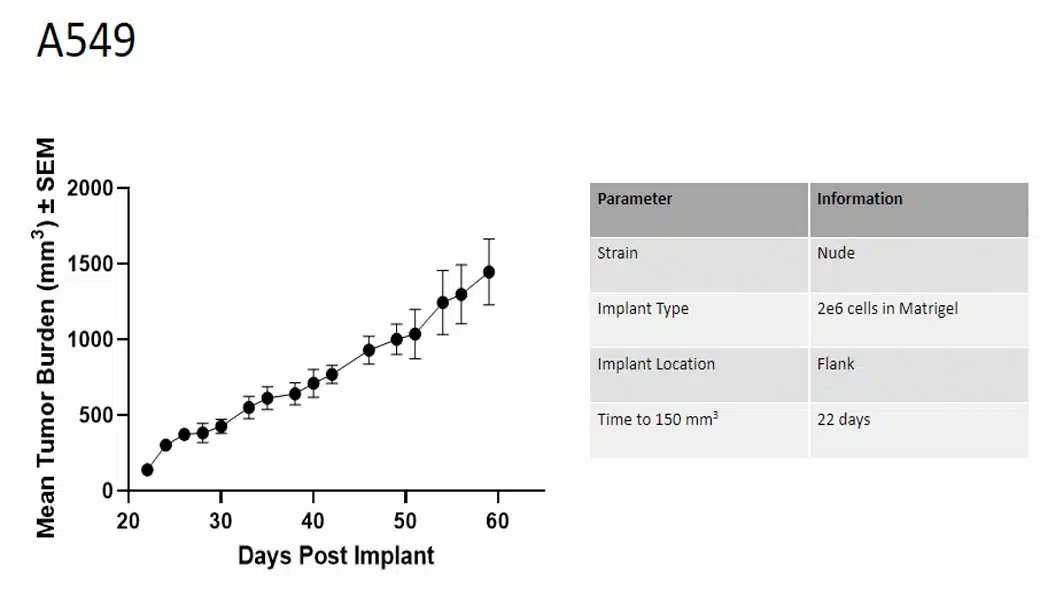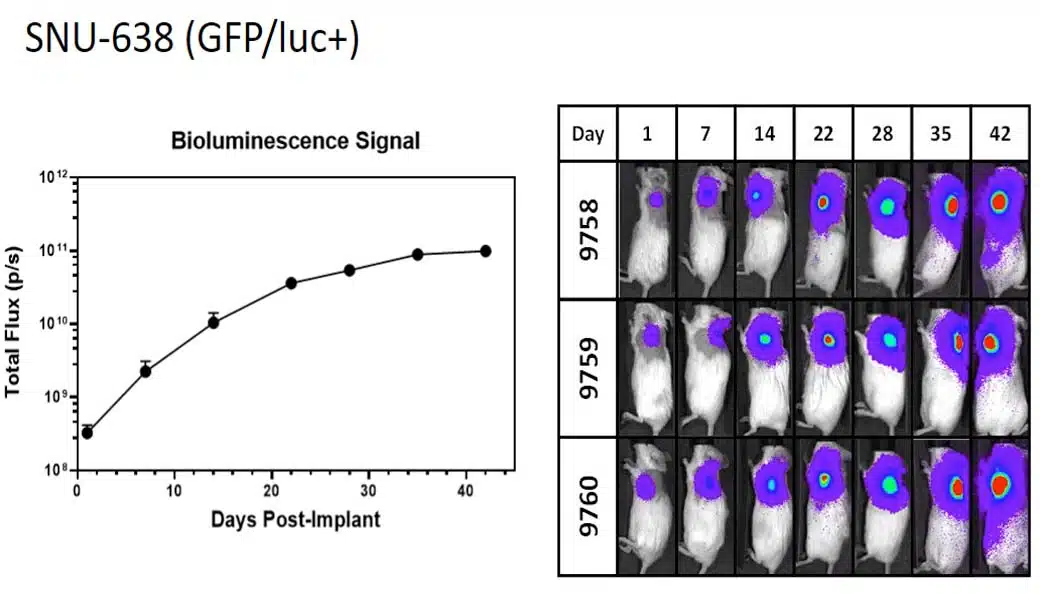Understanding Xenograft and CDX Mouse Models

Xenograft models involve the transplantation of human tumor cells or tissues into immunodeficient mice, this creates a platform that closely mimics the in vivo tumor microenvironment. In turn, it enables researchers to evaluate tumor growth, progression, and response to treatments, bridging the gap between preclinical studies and clinical efficacy.
Although xenograft models do not replicate the native tumor microenvironment as closely as orthotopic models, they use a broader range of human cancer cell lines, and better mimic the human immune response to cancer due to their immunodeficiency. Unlike orthotopic models, xenograft models are simpler to develop and maintain, resulting in greater reproducibility.
Key Cell Line in Xenograft Models and their Applications
Xenograft and CDX models have a wide range of applications within drug development, providing an integrated approach and driving forward transformative advancements in the field of oncology.
- Assessing the Efficacy of Novel Therapeutics
- Screening and Validating Drug Candidates
- Investigating Mechanisms of Drug Resistance
- Developing Tailored Treatments
- Accelerating Drug Discovery
Breast Cancer
MCF7 (Luc) is a cell line derived from a breast cancer patient that is widely used in xenograft mouse models to investigate the growth and progression of breast cancer.
Colon Cancer
HCT116 and MC38 are colon cancer cell lines used in colon cancer xenograft tumor models. HCT116 is a human colorectal carcinoma cell line that has DNA mismatch repair-deficiency.
Pancreatic Cancer
KRAS is mutated in 90% of pancreatic cancers. The Panc-1 and Panc-10.05 cell lines were derived from different patients with pancreatic adenocarcinoma and offer the ability to study different KRAS mutations.
Melanoma
A375 and SK-MEL-28 are melanoma cell lines that have been employed in xenograft mouse models. A375 has a BRAF V600E mutation and SK-MEL-28 has a NRAS Q61R mutation.
Leukemia
AML (Kg-1a) cell line has MLL and AF9 gene fusion from a patient with acute myeloid leukemia. MLL regulates gene expression, while AF9 modifies chromatin.
What are Cell-Line Xenograft (CDX) models?
Cell-line derived xenograft models aid in advancing the formulation of anti-cancer therapies, as they provide a platform for the exploration of cancer complexities. By using cancer cells that originated in laboratories, CDX models use implanted human tumor cells in mice with suppressed immune systems to create an environment that aids the progression and maturation of these tumor cells.
- High Reproducibility
- Large Scale Testing
- Genetic Manipulation
- Rapid Experimentation
Our Expertise and Services
In order for us to expedite the translation of research findings into tangible clinical applications, we actively collaborate with you on your discovery and research journey, with our multidisciplinary team of oncologists, molecular biologists, and immunologists, we offer a comprehensive package of expertise and services for xenograft and CDX model development.
Model Development
Our scientists specialize in creating xenograft and CDX models that are tailored to specific types of cancer, we carefully select suitable cell lines and mouse strains to optimize engraftment success rates.
Tumor Characterization
Using advanced molecular and histological techniques, we perform extensive tests to characterize tumors developed in cell-line derived xenograft (CDX) models, beneficial for studying tumor biology, heterogeneity, and identifying therapeutic targets.
Testing and Validation
We have capabilities to guide you in designing and executing preclinical studies to effectively evaluate the efficacy and safety of novel therapeutic agents, expediating the drug discovery process.
Collaborative Research
As a CRO we ensure that the environment we create is collaborative, this partnership combines specialized expertise, resources, and efficient processes to accelerate your research projects, fostering successful outcomes.
Visualization Techniques in Xenograft Models

Tracking tumor volume in Nude mice
A549 cells carry mutations in KRAS, STK11, and CDKN2A genes that are commonly found in non-small cell lung cancer (NSCLC). Targeting KRAS mutations has become a popular approach for treating NSCLC, as these mutations are present in approximately 25% of cases and are associated with a poor response to therapy.

Localizing SNU-638 cells in immunocompromised mice using GFP and Luciferase labeling
SNU-638 is a human gastric cancer cell line that is commonly used in xenograft mouse models for studying the growth and behavior of human gastric cancer cells. GFP labeling allows to visualize the location of the tumor and Luciferase labeling allows precise quantification of the numbers of tumor cells present throughout a treatment.